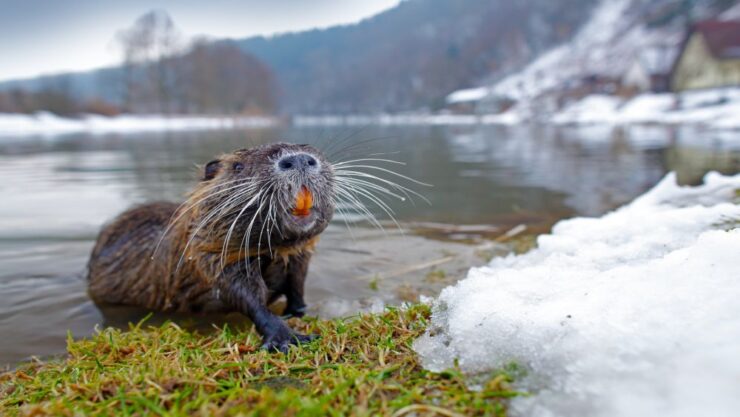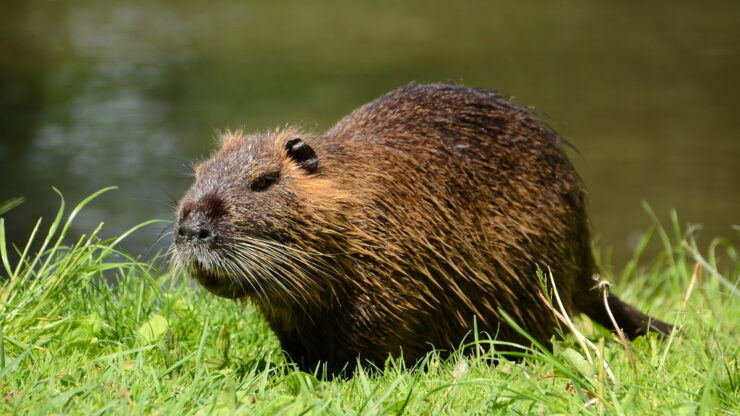The nutria (Myocastor coypus), is a large semi-aquatic rodent. In most of the world the animal is called coypu, but in North America the animal is called nutria.
Nutria are not native to the USA but were introduced years ago for their fur. Originally in pens they either escaped during a hurricane or were intentionally released, which is true is a topic that still recieves debate.NutriaNutria can easily be distinguished from muskrat and beaver by their size and tail. Unlike beavers or muskrats a Nutria has a slightly haired, round tail. Nutria are also larger than muskrats but smaller than beavers.
The forelegs are small compared with its body size. The forepaws, have five toes; four are clawed and the fifth is reduced in size. The front legs are used to groom and to excavate roots, rhizomes, and burrows, and are used in feeding. The hindfoot is webbed to aid in swimming. Although they appear awkward when on dry ground the nutria is actually quite fast.
An couple of interesting fact is that the nose and mouth can be closed to prevent entry of water and females have four pairs of mammary glands that are located on the side of the body, rather than on the belly.
Males are slightly larger then females. Nutria weigh an average of 12.0 pounds.
Nutria breed year round and are extremely prolific. The number of young in a litter ranges from 1-13 with an average of 4.5 young and they can have two litters a year. Newborn nutria feed on vegetation within hours but will also nurse for up to 8 weeks.
Nutria are strict vegetarians, consuming their food both on land and water, where they shove aquatic plants to their mouths with their forepaws. These animals consume approximately 25 percent of their weight daily. Nutria predominately feed on the base of plant stems and dig for roots and rhizomes in the winter. They often construct circular platforms of compacted, coarse emergent vegetation, which they use for feeding, birthing, resting and grooming.
Nutria do bring some money to trappers and sportsman for their fur or the carcasses that are sold to alligator farms. But the fur isn’t in much demand so prices remain very low.
The Nutria’s high reproductive rate and the reduction of fur prices has resulted in their number sky rocketing in the marshes of South Louisiana. Here the Nutria has gone from and great fur animal to the number 1 pest.
The Nutria has caused significant damage to levees and other water management structures leading to floods and expensive repair cost. With high numbers comes an big appetite too. And the fact that Nutria will dig up plants to eat the roots leads to significant erosion in the open marshes. Damage done by Nutria also includes tree girdling.

This destruction of the marsh in South Louisiana has led to the State of Louisiana to put a bounty on their heads to control their numbers to help reduce the pressure on the marshes that Nutria cause. The tail bring in 5 dollars each. Seems high but the program is closely monitored and has actually proven to be quite effective in helping reduce the loss of marsh in Louisiana.
There is a long hunting season in Louisiana and their has been a push in the commercialization of the meat which is actually quite tasty. The hope is the demand for Nutria meat will get hunters and trappers interested in making some money and thereby reduce the Nutria’s numbers using the Free Market instead of government dollars.

